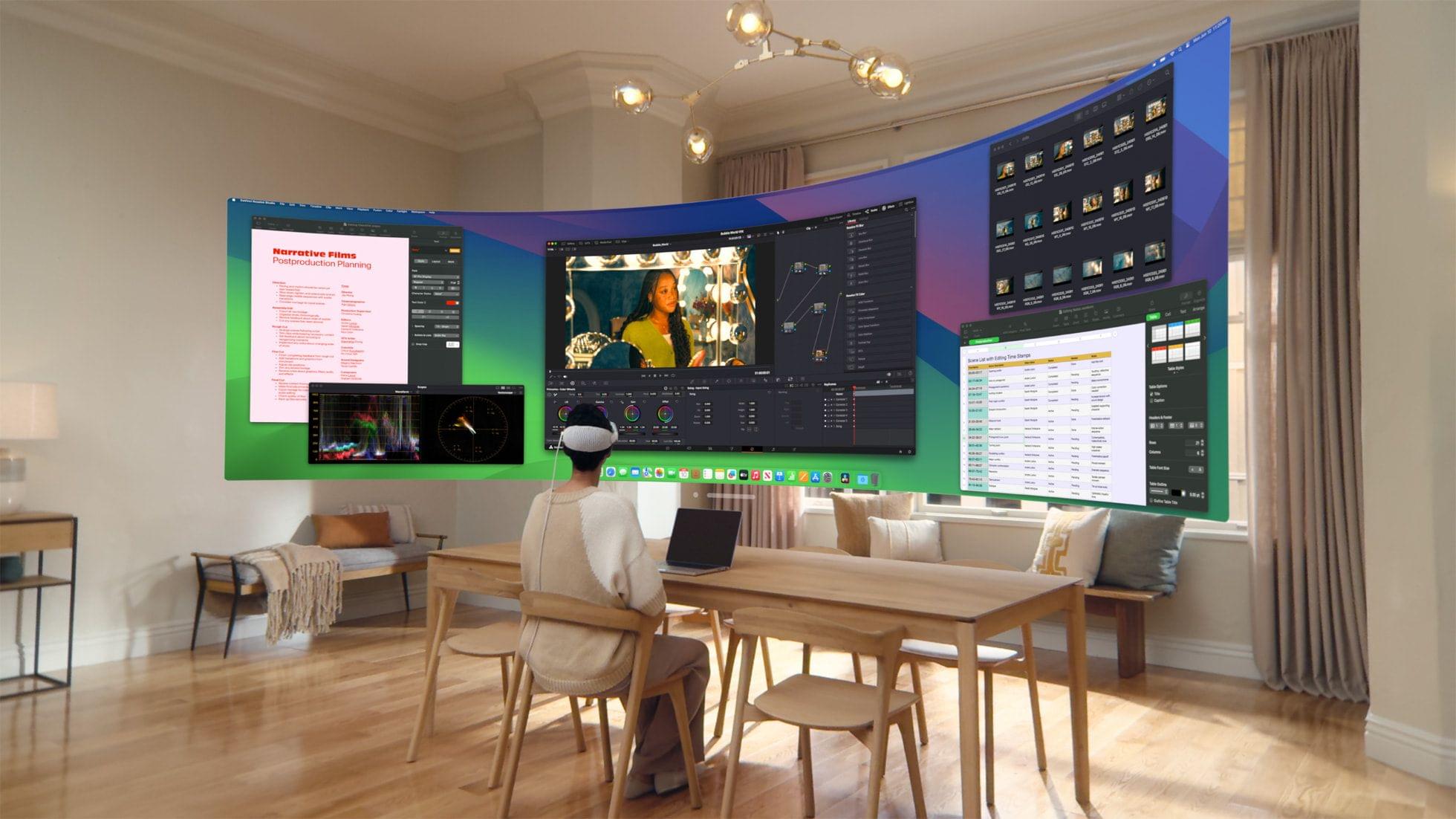Today, Apple revealed visionOS 2, the first major upgrade to the software powering Apple Vision Pro. The update, coming this fall, will include quality-of-life improvements, new ways to create and share spatial content, additional tools for developers, and more.
Interacting with the Home View and Control Center will be easier than before thanks to new system-wide gestures. Holding your hand up and tapping your fingers together will bring up the Home View, while flipping your hand over will bring up a time and battery status popover that also acts as a Control Center launcher. These gestures are simpler than the previous methods of accessing these views, which required pushing the Digital Crown for the Home View and looking upwards to reveal the Control Center launcher. Apps in the Home View can now be rearranged, and compatible iPad and iPhone apps are no longer constrained to a single folder.
The new gestures for accessing the Home View and Control Center in visionOS 2.Replay
Mac Virtual Display is expanding later this year to support a higher resolution and larger size, resulting in a display roughly equivalent to two 4K monitors side by side. The experience of using peripherals with Apple Vision Pro will be improved with Magic Keyboard passthrough in immersive environments and support for mice. Guest User information will be saved for 30 days so users’ friends and family can use Apple Vision Pro without going through the setup process repeatedly, and Travel Mode will be supported on trains in addition to airplanes.
The company is taking several steps to make spatial content more accessible and easy to create. The Photos app will use machine learning to convert users’ 2D photos into spatial photos. Meanwhile, SharePlay support is coming to the Photos app so that users can enjoy spatial photos and videos with others.
For spatial video, Apple announced that Canon will release a new lens later this year that will enable spatial video capture with the EOS R7 camera. Spatial video editing is coming to Final Cut Pro in an upcoming update, and the Vimeo app for Apple Vision Pro will offer the ability to upload spatial videos and view spatial videos shared by others.
Apple Immersive Video – the company’s format for 3D, 8K, 180-degree videos like the recent Parkour episode of the Adventure series – is also becoming more accessible to filmmakers. Blackmagic Design plans to release a commercially-available camera system and an update to DaVinci Resolve Studio that support Apple Immersive Video, opening up the format beyond the videos we’ve seen from Apple thus far. There are new immersive video titles in the works from Apple, too, including an extreme sports series in conjunction with Red Bull, a music experience from The Weeknd, and a scripted short film called Submerged from director Edward Berger.
New tools for developers aim to make it easier to create 3D and shared experiences. They include advanced volumetric APIs for running 3D apps side by side, TabletopKit for shared and collaborative table-based experiences, and enterprise APIs. HealthKit will be available in visionOS 2 as well. Apple says that there are currently over 2,000 native Vision Pro apps and 1.5 million compatible iPad and iPhone apps.
With visionOS 2, the Apple Vision Pro will become an AirPlay receiver for content from a user’s iPhone, iPad, or Mac. The Mindfulness app is adding a new feature called Follow Your Breathing that adjusts the app’s animations and sounds to your breathing patterns. Multiview is coming to the Apple TV app, and videos from Safari will be viewable in Environments, including the new Bora Bora Environment. Finally, Live Captions will be available systemwide for live conversations and audio from apps.
You can follow all of our WWDC coverage through our WWDC 2024 hub or subscribe to the dedicated WWDC 2024 RSS feed.




